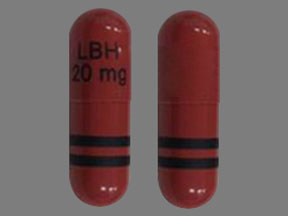Farydak and Alcohol/Food Interactions
There is 1 alcohol/food/lifestyle interaction with Farydak (panobinostat).
Panobinostat Food
Moderate Food Interaction
GENERALLY AVOID: Grapefruit juice may increase the plasma concentrations of panobinostat. The proposed mechanism is inhibition of CYP450 3A4-mediated first-pass metabolism in the gut wall by certain compounds present in grapefruit. Increased exposure to panobinostat may increase the risk of adverse effects such as nausea, vomiting, diarrhea, anorexia, peripheral edema, cardiotoxicity, ECG abnormalities, electrolyte disturbances, bleeding complications, hepatotoxicity, and myelosuppression.
Food may delay the rate of absorption of panobinostat, but does not significantly affect the overall extent of absorption. When a single oral dose of panobinostat was administered to 36 patients with advanced cancer 30 minutes after a high-fat meal, panobinostat peak plasma concentration (Cmax) and systemic exposure (AUC) were approximately 44% and 16% lower, respectively, compared to administration under fasting conditions. The median time to maximum concentration (Tmax) was prolonged by 2.5 hours.
MANAGEMENT: Patients should avoid consumption of grapefruit or grapefruit juice during treatment with panobinostat. The manufacturer also recommends avoiding star fruit, Seville oranges, pomegranate, and pomegranate juice. Panobinostat may be administered with or without food.
References
- Cerner Multum, Inc. "UK Summary of Product Characteristics."
- Cerner Multum, Inc. "Australian Product Information."
- (2015) "Product Information. Farydak (panobinostat)." Novartis Pharmaceuticals
Farydak drug interactions
There are 640 drug interactions with Farydak (panobinostat).
Farydak disease interactions
There are 5 disease interactions with Farydak (panobinostat) which include:
More about Farydak (panobinostat)
- Farydak consumer information
- Check interactions
- Compare alternatives
- Drug images
- Side effects
- Dosage information
- During pregnancy
- FDA approval history
- Drug class: histone deacetylase inhibitors
- En español
Related treatment guides
Drug Interaction Classification
| Highly clinically significant. Avoid combinations; the risk of the interaction outweighs the benefit. | |
| Moderately clinically significant. Usually avoid combinations; use it only under special circumstances. | |
| Minimally clinically significant. Minimize risk; assess risk and consider an alternative drug, take steps to circumvent the interaction risk and/or institute a monitoring plan. | |
| No interaction information available. |
Further information
Always consult your healthcare provider to ensure the information displayed on this page applies to your personal circumstances.


